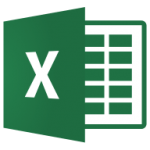In this article, I will give introduction to the basics of Computers, its components, definition and working model of computer.
Highlights
1. What is Computer?
2. Components of Computer
3. Block diagram/ Architecture of Computer
4. Advantages of Computer
5. Disadvantages (Limitations) of Computer
1. What is Computer?
Computer is derived from the word “Compute” which means “to calculate“. It is an electronic device that receives input from the user, processes or stores the input as per user instructions and gives the output.
The input given by the user is called as Data and the output received by computer is called as Information (useful data).

So, the main functions of computer are:-
I. It takes data as input by using input devices like Keyboard, Mouse etc.
II. Stores the data in Memory.
III. Processes the data and converts it into useful information.
IV. Generates the output on output devices like Monitor, Printer etc.
2. Components of Computer
There are mainly 2 components of computer:
I. Hardware:-
The physical parts or components of computer which can be touched are called as Hardware of computer. For example, monitor, keyboard, mouse, CPU etc.
II. Software:-
It is a set of instructions or data which tell computer how to perform a particular task. For example, Operating System.
3. Block diagram/ Architecture of Computer
There are mainly 3 parts of a computer system:
I. Input unit
II. Output unit
III. Central Processing Unit (CPU)
CPU is again divided into 3 parts:
I. Arithmetic Logic Unit (ALU)
II. Control Unit (CU)
III. Memory Unit (MU)
Let’s understand each of these terms using the below block diagram:

I. Input Unit:-
Data is entered into the system using various input devices like Keyboard, Mouse etc.
II. Output Unit:-
Output unit contains various output devices like Monitor, Printer etc. to show the output or result given by computer.
III. Central Processing Unit (CPU):-
CPU is called as the Brain of computer. It is responsible for processing all the instructions given by user. All the calculations are performed by CPU. So, it is the main part of computer system. CPU consists of following 3 parts:-
I. Arithmetic Logic Unit (ALU):-
ALU is responsible for all the mathematical (arithmetic) and logical calculations. Mathematical calculations include addition, subtraction, multiplication etc. and logical calculations include greater than(<), less than(>) etc.
II. Control Unit (CU):-
Control Unit controls all the operations performed by computer system. It also controls the input and output devices of the computer system.
III. Memory Unit (MU):-
Memory unit stores the input data given by user and also stores the output generated by computer.
4. Advantages of Computer
I. Multitasking:- A computer can perform multiple tasks at a time. It is one of the major advantages of computer.
II. Speed:- Computer can perform many tasks like calculations within very less time. It can execute millions of instructions in milliseconds. So, speed of computer is very fast.
III. Accuracy:- A human being can do mistakes in calculations but computer is very accurate in solving the problems.
IV. Data security:- Protecting digital data is known as data security. Computer can protect our confidential data with the help of passwords.
5. Disadvantages (Limitations) of Computer
I. No I.Q. :- A computer has no intelligence power. It cannot think but only works as per the instructions given by user.
II. No decision taking capability:- Computer cannot take decisions on its own.
III. Virus and hacking attacks:- Many virus can cause computers to stop working and lose valuable data because of them.
IV. Reduction in employment opportunities:- Computers have reduce the need for people to do manual jobs as a computer can do the job of several people.
For more Computer Basics articles click here.



